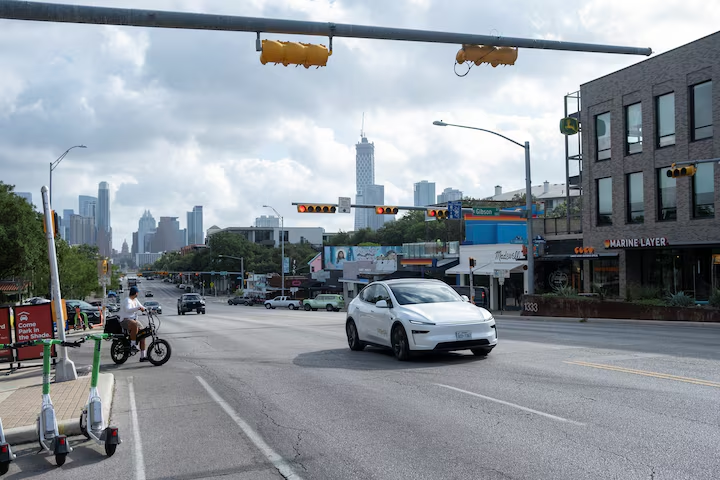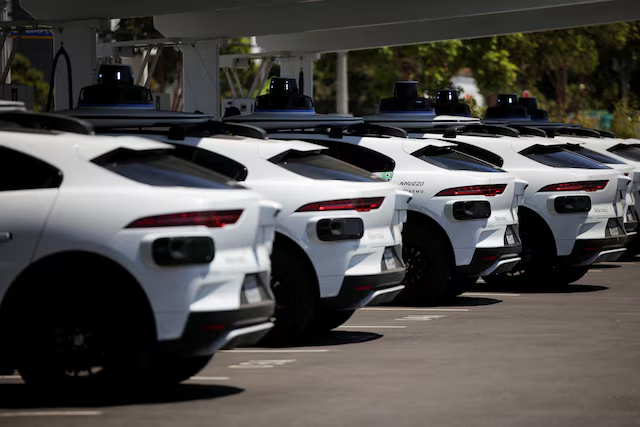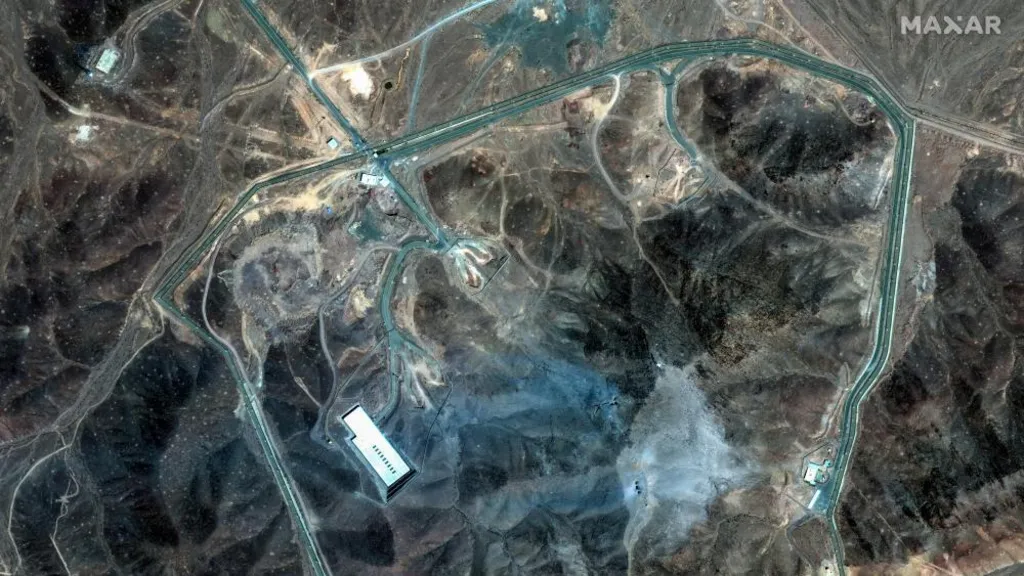June 24, Austin (Reuters) – Elon Musk is known for making bold predictions — rockets to Mars, tunnels under cities, and now… millions of Tesla robotaxis zipping around by the end of 2026. The reality? So far, about a dozen Teslas are crawling around Austin in what looks more like a dress rehearsal than a planetary takeover.
On Sunday, Tesla (NASDAQ: TSLA) quietly rolled out its first driverless cabs in Austin, Texas — Model Y vehicles with safety drivers and remote monitors in place, avoiding bad weather like the plague. The small-scale trial is step one in Musk’s latest moonshot: to turn millions of Teslas worldwide into fully autonomous money-makers, all via a software update.
But can Tesla actually pull this off in time? Industry experts and analysts aren’t so sure. While Tesla fans cheer, many autonomous vehicle veterans warn that turning a choreographed demo into a global fleet is, well, rocket science.
“If the software works, sure — it could be fast,” said Morningstar analyst Seth Goldstein. “But it’s still being tested.”
🏎️ Tesla’s Fast Lane, or Road to Nowhere?
Unlike its rivals, Tesla doesn’t rely on radar or lidar — its cars use only cameras and artificial intelligence. The company is betting big that this approach will eventually make its cars more adaptable to any road in the world. However, training an AI to handle every traffic quirk (or as experts say, “edge cases”) is a monumental task.
“Look how long Waymo has taken,” said Carnegie Mellon professor Philip Koopman. “There’s no reason to think Tesla will do it faster.”
Waymo, Google’s self-driving arm, began its journey back in 2009. Its now 1,500-strong robotaxi fleet only operates in select U.S. cities after years of meticulous development and testing. By contrast, Musk is hoping to skip ahead — going from a dozen test cars in Austin to millions of robotaxis globally by late 2026.
“It’s like saying you’re going to Mars… but first going to Cleveland,” joked University of South Carolina law professor Bryant Walker Smith.
🎥 Early Robotaxi Tests: Oops Moments & Social Media Cheerleading
The Austin tests featured some curious moments. Tesla invited hand-picked influencers to share glowing first impressions — but not all rides went smoothly. One video showed a robotaxi drifting into the wrong lane at a busy intersection for six seconds. No crash occurred, but the following car honked in confusion.
Another test run clocked a Tesla robotaxi doing 40-45 mph in a 35-mph school zone — right outside the Texas School for the Deaf, where pedestrians require extra caution.
Meanwhile, Musk claimed on X that “every Tesla” rolling off the factory floor could be made autonomous with just a software update — despite a federal safety probe into Tesla’s “Full Self-Driving” system following multiple crashes, including some fatal incidents in bad weather.
⚖️ Can Tesla Outrun Waymo & Regulators?
Some experts say Tesla’s mass production muscle and ability to push fast software updates could help it scale faster than Waymo, which buys expensive Jaguars and bolts on sensors. Waymo’s ex-CEO John Krafcik remains skeptical: “Tesla’s current system isn’t as safe as it needs to be — and it shows.”
Another concern? If Tesla moves too fast and accidents happen, public trust in robotaxis could be set back industry-wide. Regulators are watching closely, and prior legal trouble over the misleadingly named “Full Self-Driving” system hasn’t helped Tesla’s case.
🚗 Final Gearshift: Will Musk’s Bold Timeline Hit a Red Light?
For now, Tesla’s robotaxi dream remains just that — a dream. Moving from a tightly controlled Austin pilot to a global fleet will take far more than optimism and hype.
Elon Musk may think millions of Teslas will roam autonomously in 2026 — but experts say that journey might be longer, bumpier, and more unpredictable than fans would like to believe.





Leave a Reply